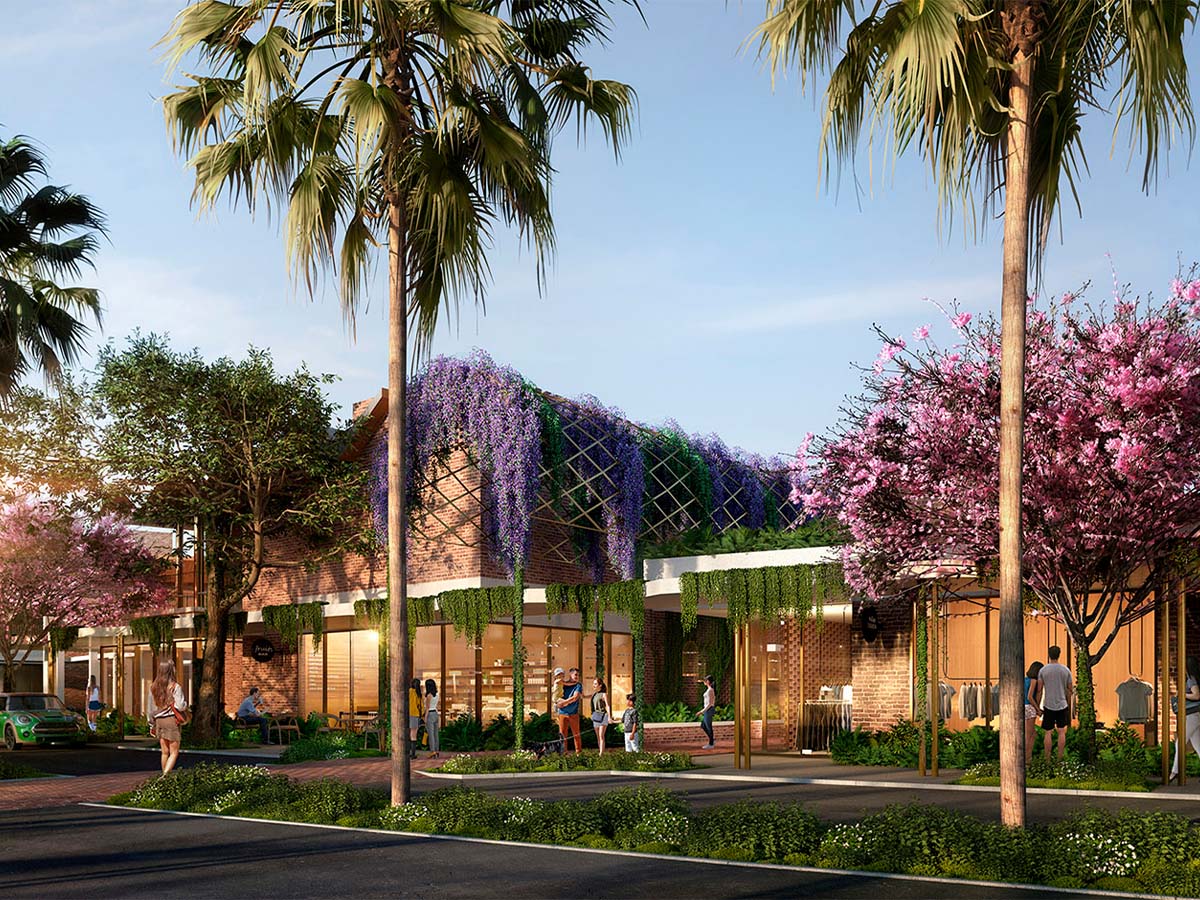A Retail Revolution
May 8 2024

A new trend of retail offering is on the rise on the Gold Coast, facilitating a shift in the way people shop.
While online stores continue to grow and pose risk on retail assets, a rise in ‘destination retail centres’ that offer a more resort-style shopping experience are driving a return to bricks and mortar.
Beyond the retail offerings / tenant mix, these new hubs offer low or no-cost leisure facilities or experiences, such as parks and playgrounds, alongside cafes and restaurants that stretch far beyond the dining experiences of the food courts of old.
Demand for these destination retail hubs are proving popular on the Gold Coast, where the population and average income is rising.

Adam Grbcic, commercial specialist at Kollosche, says a good example of these new retail destinations is The Lanes Retail Village, approved for Mermaid Waters.
While still yet to commence, the centre offers more than the traditional mix of convenience-style retailers anchored by a small supermarket to attract first-class operators as well as customers for a new centre.
“What it really established was that consumers want lifestyle centres, destination shopping centres,” he says.
“The demand for this style of retail on the Gold Coast is real and as the population increases along the eastern corridor there will be increased demand for alternative retail options. This will, in turn, support and attract top operators from interstate, encouraging them to expand into this region.”
Despite the rising cost of living, Australia’s love affair with shopping remains, albeit with a closer eye on how much is spent and on what.
Adam says for an individual or institutional investor in the $10 million-plus bracket, the new era of retail is an attractive option. The high demand for older-style centres to be revigorated alongside strength in the number of operators who are committing to key retail spaces provides a high level of security when these spaces are offered to the market.
No Going Back
“Looking at where there’s been a lack of supply added to the market, retail is right up there,” Adam says.
“Because adding supply of that scale can mean more than a two-year construction process, it’s pretty hard to catch up with demand if you aren’t forward thinking about growth. Plus, the Gold Coast has recently been restricted in its ability to deliver added supply, mainly due to a combination of finance constraints and the escalation in build costs.
“It’s safe to say vacancy rates won’t go backwards because we’re getting more people, not less.”
The Gold Coast is also likely to see a rise in smaller, location-centric destination retail offerings, according to Adam.
“While it is OK to drive to, say, Pacific Fair, travel times are going to get longer”, he says.
And like any other growing or major city in Australia, as population, traffic and travel times increase, so too does the desire of people to be able to live and enjoy leisure time within proximity of each other.
Suburbs and precincts will establish their own character and with higher population densities in key areas around the city, a higher calibre of operators will be enticed into these areas.
Despite all this, Adam says, factors such as land availability, construction times and funding complexities must be considered.
“Funding for retail is complicated because you need businesses to commit to long-term leases, two or three years prior to completion,” he says.
“This is unlike a residential buyer, who has the ability to make reasonable assumption as to what they require as a resident. It is a substantial commitment for a business to know how their business will trade in a new and untested centre prior to completion.”